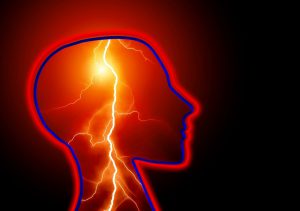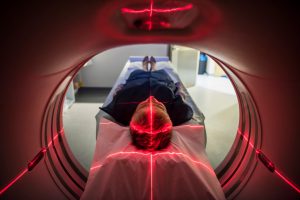One of the most common causes of repeat seizures is epilepsy. A diagnosis of this disorder usually comes after someone has experienced at least 2 seizures that were not caused by another medical condition, such as low blood pressure. While the seizures might have different symptoms, they are all caused by a temporary change in the brain’s electrical functioning. Epilepsy is more common than you might think, so this November, for Epilepsy Awareness Month, we’d like to highlight this disorder and look at its causes, its symptoms, and ways to treat and possibly prevent it.
Common Causes Of Seizures

Approximately 65 million people around the world live with epilepsy, and 1 in 26 Americans will develop epilepsy in their lifetime. It can develop in a person at any time and at any age, but most new cases occur in children during their first year of life. In about 50% of cases the causes of epilepsy are unknown, but, in general, the most common include:
- Genetics and family history
- Metabolism changes
- Trauma during birth, such as oxygen deprivation
- Premature birth or low birth weight
- Brain malformations
- Congenital conditions such as Down’s syndrome, Angelman’s syndrome, tuberous sclerosis, and neurofibromatosis
- Infectious disease such as meningitis
- Head trauma
- Alzheimer’s disease
- Stroke
- Alcohol or drug abuse
- Immune system abnormalities
The Different Types of Seizures
Generally, the different types of epileptic seizures can be grouped into 2 broad categories:
- Primary generalized seizures– begin with a widespread electrical discharge that involves both sides of the brain at once, and can result in a loss of consciousness, falls, or muscle contractions. A predisposition to this type of seizure is generally hereditary, Absence, Atonic, Tonic, Clonic, Myoclonic, Tonic-clonic seizures fall into this category.

- Partial (or Focal) seizures– begin with an electrical discharge in one area of the brain. Some of these seizures are related to head injury, infection of the brain, stroke, or tumor, but most of the time the cause is unknown. This kind of seizure affects about 60% of people with epilepsy and can turn into generalized seizures. Motor focal, Sensory focal, Autonomic focal, and Psychological focal seizures fall into this category.
Factors That Increase Risk

While it is not always clear why someone begins having seizures, there are some known risk factors that increase the chances of predisposed people having one, including:
- Stress
- Sleep deprivation
- Failure to take prescribed medications
- Insufficient food intake
Epilepsy is also more common in men than it is in women, and children are more likely to have epilepsy of a genetic origin than to experience seizures for another reason.
In addition, having one seizure also increases the likelihood of having more. Half of all people who have an unexplained seizure will most likely have another one within 6 months of the first one. If someone has had a seizure due a head injury, then that person becomes twice as likely to have another. If someone has 2 seizures, then the likelihood of them having another one is 80%.
Diagnosis & Treatment

The good news is that epilepsy is treatable. Once a doctor makes a diagnosis based on symptoms, and tests such as electroencephalograms (EEG), CT scans, or MRIs, they can prescribe antiepileptic drugs, which reduce the brain cells’ tendency to send excessive electrical signals.
Approximately 70% of both children and adults that take medication for the disorder can go 5 years without having a seizure and enter remission. Once they are in remission, an additional 75% can be weaned from the medication over time. For those looking for extra help, diet can have a positive effect on some patients with specific forms of epilepsy. The keto diet and modified Atkins diet have been shown to reduce seizures in half of patients, mainly children.
Epilepsy is a chronic condition that affects people of all different ages in different ways, but most people with epilepsy can live active lives. As long as those diagnosed with epilepsy take their medications, keep a positive attitude, and maintain a healthy diet, they can control the disorder.
